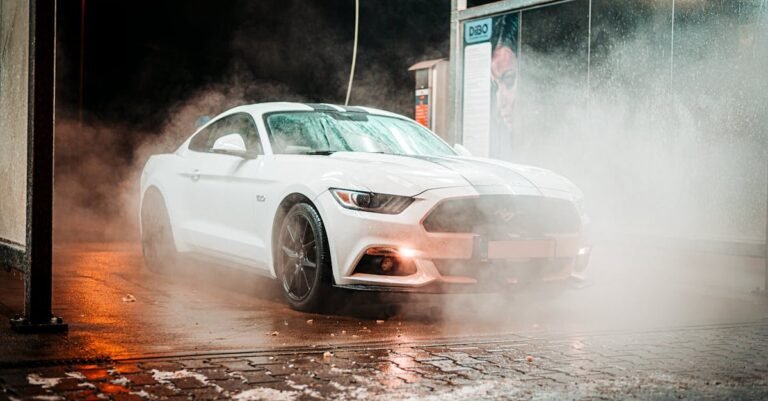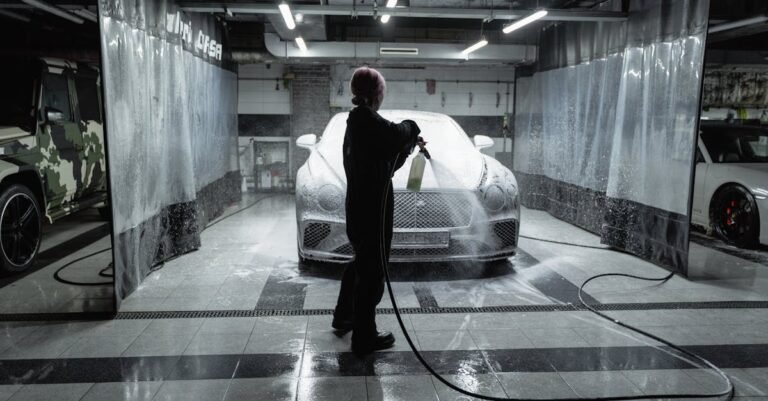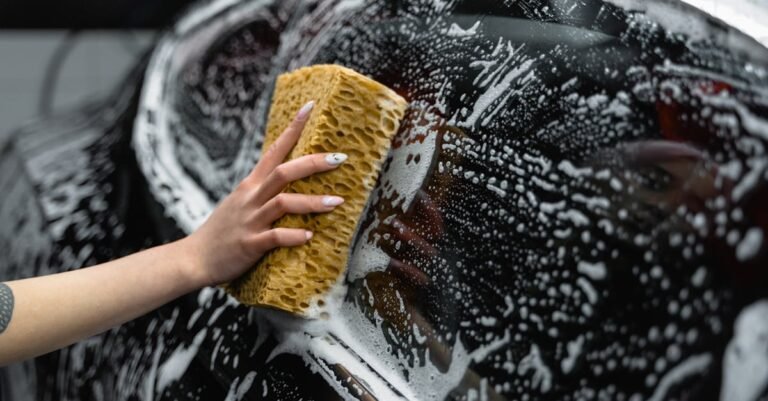Table Of Content
- Preventing Car Rust: Your Ultimate Guide to Keeping Your Ride Pristine
- Understanding the Enemy: What Exactly is Car Rust?
- Prime Suspects: Where Does Rust Love to Hide?
- Your First Line of Defense: Regular Washing and Cleaning
- Wax On, Rust Off: The Protective Power of Waxing
- Going Underneath: The Importance of Undercoating and Rustproofing
- Don’t Ignore the Small Stuff: Addressing Chips and Scratches Promptly
- Environmental Factors: Battling Salt, Moisture, and More
- Proactive Maintenance: Regular Inspections are Key
- Conclusion: Keeping Rust at Bay for the Long Haul
- Frequently Asked Questions (FAQs)
Preventing Car Rust: Your Ultimate Guide to Keeping Your Ride Pristine
Ah, car ownership. It’s a beautiful thing, isn’t it? The freedom of the open road, the convenience, maybe even the sheer joy of driving a machine you love. But lurking in the shadows, waiting for its chance, is a relentless enemy: rust. It’s the automotive equivalent of aging, slowly but surely trying to eat away at your pride and joy. You might think, “Rust? That’s an old car problem!” Think again. Even modern marvels of engineering aren’t immune. But don’t despair! Preventing car rust isn’t some dark art; it’s about understanding the threat and taking consistent, proactive steps. Ready to learn how to keep your vehicle looking sharp and structurally sound for years to come? Let’s dive in!
Understanding the Enemy: What Exactly is Car Rust?
Before we talk prevention, let’s get up close and personal with the culprit. Rust, in simple terms, is iron oxide. It’s what happens when iron or steel (which is mostly iron) hangs out with oxygen and moisture for too long. Think of it as metal’s way of returning to its natural state. It’s a chemical reaction, and unfortunately for us car lovers, our vehicles are packed with steel components.
The Science Behind the Scourge (Oxidation Explained)
Okay, let’s put on our lab coats for a second (figuratively, of course!). The process is called oxidation. Iron atoms lose electrons to oxygen atoms when water acts as a catalyst (an electrolyte, technically). This electrochemical reaction forms hydrated iron(III) oxide – that flaky, reddish brown stuff we know and hate. It starts small, maybe as a tiny bubble under the paint, but it weakens the metal, making it brittle and eventually causing holes. Salt, like the kind used on winter roads, supercharges this process by making water a much better electrolyte. It’s like pouring gasoline on a fire, chemically speaking.
Why Modern Cars Still Rust (It’s Not Just an Old Car Problem!)
You might be wondering, “Don’t car manufacturers use galvanized steel and fancy coatings?” Absolutely! Carmakers have made huge strides in rust prevention. They use galvanized steel (steel coated with zinc, which corrodes preferentially, protecting the steel), better paint technologies, sealants, and improved designs that minimize water traps. However, no system is perfect. Paint gets chipped by stones, exposing the metal underneath. Scratches happen. Underbody coatings can get damaged. Sealants can degrade over time. Plus, areas like weld seams, joints, and hidden cavities are inherently harder to protect completely. Environmental factors, especially road salt and high humidity, constantly attack these defenses. So, while cars are more rust resistant than they used to be, they’re certainly not rustproof.
Prime Suspects: Where Does Rust Love to Hide?
Rust isn’t always obvious. It often starts in hidden nooks and crannies before bubbling up to the surface. Knowing where to look is half the battle. Think like rust: where does water, dirt, and salt collect and sit undisturbed?
Common Rust Hotspots on Your Vehicle
Keep a keen eye on these vulnerable areas during your checks and washes:
Wheel Wells and Rocker Panels
These areas are constantly bombarded by road debris, water, salt, and mud flung up by your tires. The inner lips of wheel arches and the panels running beneath your doors (rocker panels) are prime real estate for rust. Dirt and moisture get trapped, creating a perfect breeding ground. Damage from stones and impacts compromises the paint and undercoating here easily.
Frame Rails and Subframes
The structural backbone of your car! Rust here is serious business, affecting vehicle safety and integrity. Water and salt spray coat the undercarriage, and these crucial components often have complex shapes with areas where moisture can linger. It’s harder to see, so specific underbody inspections are vital.
Doors, Hood, and Trunk Lid Edges
Look closely at the bottom edges and seams of doors, the hood, and the trunk lid. Water often collects in these spots, especially around drain holes (which can get clogged). Paint can be thinner or more easily chipped along these edges, giving rust an entry point.
Windshield and Window Seals
The rubber or plastic seals around your glass can trap moisture against the metal frame underneath. If the seal cracks or degrades, water seeps in and sits against the pinch welds, leading to rust that can eventually compromise the seal and even the structural integrity around the glass.
Your First Line of Defense: Regular Washing and Cleaning
It sounds almost too simple, right? Just wash your car? But honestly, this is one of the most effective and easiest ways to prevent rust. Think of it as basic hygiene for your vehicle.
Why Frequent Washing is Crucial (Especially in Winter)
Washing removes the contaminants that accelerate rust – namely dirt, grime, road salt, bird droppings (which are acidic!), and dead bugs. Dirt holds moisture against the paint and metal. Salt, as we discussed, is a major catalyst for corrosion. In winter, if you live where roads are salted or treated with de icing chemicals, frequent washing isn’t just recommended; it’s practically mandatory for long term rust prevention. Getting that corrosive stuff off quickly is key. Don’t forget the undercarriage!
The Right Way to Wash: Tips for Rust Prevention
Not all washes are created equal. Aim for a thorough wash at least every couple of weeks, more often in winter or if your car gets particularly dirty.
- Use Car Specific Soap: Dish soap strips wax and protective coatings. Stick to dedicated car wash soap.
- Two Bucket Method: Use one bucket for soapy water and another for rinsing your wash mitt. This prevents transferring grit back onto the paint, minimizing scratches.
- Don’t Forget the Underside: Many car washes offer an undercarriage spray, or you can use a pressure washer (carefully!) or a specialized attachment to rinse away salt and grime from the frame, suspension components, and wheel wells.
- Clean Wheel Wells Thoroughly: Get in there and blast out any accumulated mud and debris.
- Dry Thoroughly: Use microfiber towels to dry the car. Water spots aren’t just unsightly; lingering water can contribute to rust, especially in seams and crevices. Open doors, hood, and trunk to wipe down jambs and edges.
- Check Drain Holes: Ensure drain holes in doors, trunk lids, and sunroofs are clear so water can escape properly.
Wax On, Rust Off: The Protective Power of Waxing
Washing cleans the surface, but waxing protects it. Think of wax as a sacrificial layer, a shield standing between your car’s paint and the harsh elements.
How Wax Creates a Barrier Against Moisture
Car wax, whether it’s a traditional carnauba wax, a synthetic sealant, or a ceramic coating, creates a hydrophobic (water repelling) layer on top of your paint. Water beads up and rolls off instead of sitting flat on the surface. This significantly reduces the amount of time moisture is in direct contact with your paintwork. It also provides a barrier against UV rays, contaminants like bird droppings and tree sap, and minor abrasions. By protecting the paint, you’re protecting the metal underneath. Aim to wax your car every few months, or follow the specific recommendations for the product you use (some modern sealants and coatings last much longer).
Going Underneath: The Importance of Undercoating and Rustproofing
While washing and waxing protect the visible parts, what about the belly of the beast? The undercarriage takes the brunt of the assault from road spray, salt, and debris. This is where undercoating and rustproofing come in.
Types of Undercoating Explained
There are several types of undercoating products available, usually applied as a spray:
- Rubberized Undercoating: This is a common type, creating a soft, rubbery layer that protects against moisture, salt, and stone chips. It also offers some sound deadening benefits.
- Asphalt Based Undercoating: Often used in heavy duty applications, it provides excellent protection but can be messy and may crack over time if not applied correctly.
- Wax or Paraffin Based Undercoating: These seep into crevices and seams, displacing moisture. They remain somewhat soft and can “self heal” minor scrapes. They often require periodic reapplication, typically annually or biannually.
- Polyurethane Undercoating: Bonds strongly to the metal, providing a durable protective layer. Requires careful surface preparation.
Rustproofing often involves applying these coatings but can also include injecting a waxy or oily substance into body cavities (like inside doors, rocker panels, and frame rails) to protect hidden areas.
Is Factory Rustproofing Enough?
Modern cars come with some level of factory rust protection, including galvanized panels and initial coatings. Is it enough? That depends heavily on your climate and how long you plan to keep the car. In areas with harsh winters (heavy salt use) or coastal regions (salty air), factory protection might not be sufficient for long term ownership. Aftermarket undercoating or rustproofing can provide an extra, more robust layer of defense, especially for the vulnerable undercarriage and internal cavities. However, ensure it’s applied correctly by a reputable shop, as improper application (like blocking drain holes) can actually trap moisture and make rust worse!
Don’t Ignore the Small Stuff: Addressing Chips and Scratches Promptly
Think of a paint chip or a deep scratch as a breach in your car’s armor. Even a tiny opening exposes the underlying metal to moisture and oxygen, creating an invitation for rust to start. What begins as a small, insignificant speck of surface rust can quickly grow and spread under the surrounding paint if left untreated. Check your car regularly for chips (especially on the hood, front bumper, and rocker panels) and scratches. Touch up kits, readily available from dealerships or auto parts stores, are an inexpensive and relatively easy way to seal these breaches. Clean the area thoroughly, apply the touch up paint carefully, and maybe add a layer of clear coat. It might not look perfect, but it seals the metal and stops rust in its tracks.
Environmental Factors: Battling Salt, Moisture, and More
Where you live and drive plays a huge role in the fight against rust. Some environments are simply tougher on vehicles than others.
The Winter Woes: Road Salt’s Corrosive Impact
Ah, winter. Snow can be beautiful, but the salt and chemical de icers used to keep roads clear are absolute nightmares for cars. Sodium chloride (rock salt) and other chlorides dramatically accelerate the rusting process by increasing the conductivity of water. The slushy, salty spray coats every inch of your car’s underside and lower body panels. This is why frequent washing, especially the undercarriage, is non negotiable in snowy climates during winter months. Even parking in a heated garage can sometimes accelerate rust if you bring in a car caked with salty slush – the warmth speeds up the chemical reaction. It’s often better to let it stay cold or rinse it off before parking inside.
Coastal Living and Salty Air
Living near the ocean means dealing with salt constantly, even when it’s not winter. The air itself carries microscopic salt particles and high humidity. This salty, moist air settles on your car, working its way into seams and crevices. Cars in coastal areas often show rust sooner than those inland. Regular washing and waxing are extra important here to keep that protective barrier intact and wash away salt deposits before they can do damage.
Proactive Maintenance: Regular Inspections are Key
Don’t just wait until you see rust bubbles. Be proactive! Make inspecting for potential rust spots part of your regular routine. When you wash your car, take an extra few minutes to really look it over.
- Walk Around: Check for paint bubbles, chips, scratches, and discoloration, especially along lower body panels, edges, and around trim.
- Open Up: Inspect door jambs, trunk gutters, and under the hood along seams and edges. Check that drain holes are clear.
- Look Underneath: If you can (safely!), peek underneath. Look at the frame rails, floor pans, suspension mounting points, exhaust system, and brake lines for signs of corrosion. Even better, have your mechanic give the underbody a good look during regular service appointments.
- Feel Around: Gently feel along the bottom edges of doors and wheel well lips. Sometimes you can feel bubbling paint or rough spots before they are easily visible.
Catching rust early, when it’s just a small surface issue, makes repair much easier and cheaper than dealing with widespread corrosion later on.
Conclusion: Keeping Rust at Bay for the Long Haul
Preventing car rust isn’t a one time fix; it’s an ongoing commitment. It requires vigilance and consistent care. By understanding how and where rust forms, and by implementing a routine of regular washing, waxing, prompt chip repair, and considering protective coatings like undercoating (especially in harsh environments), you can significantly extend the life and preserve the appearance and value of your vehicle. It might seem like a bit of effort, but think of it as an investment. Protecting your car from rust means enjoying it for longer, maintaining its structural integrity, and ensuring it holds its value better when it’s time to sell or trade in. Don’t let the “tin worm” win – fight back with knowledge and good old fashioned car care!
Frequently Asked Questions (FAQs)
FAQ 1: Can rust spread even if I fix the visible spot?
Yes, unfortunately, it can. Often, the rust you see on the surface (like a paint bubble) is just the tip of the iceberg. Rust can spread underneath the surrounding paint or along seams. Proper repair involves removing all the corroded metal (often by grinding or cutting it out), treating the area with a rust converter or inhibitor, priming, and then repainting. Just sanding the visible spot and painting over it often leads to the rust returning quickly.
FAQ 2: Is electronic rust prevention effective?
This is a controversial topic. Electronic rust inhibitors work by imposing a small electrical current through the car’s metal panels, theoretically disrupting the electrochemical process of rusting. While the science (cathodic protection) is sound and used effectively on large structures like pipelines and ships, its effectiveness on the complex, multi component structure of a car is highly debated. Many independent tests and consumer reports have found little to no benefit from these devices on automobiles compared to traditional prevention methods like coatings and regular cleaning. Most experts recommend sticking to proven methods.
FAQ 3: How often should I get my car undercoated?
This depends on the type of undercoating used and your local climate. Some durable polyurethane or rubberized coatings might last for many years with occasional touch ups. Wax or oil based coatings often require reapplication every 1 to 3 years as they wear off or dry out. If you live in an area with heavy road salt use, annual inspections and potential reapplications, especially of wax/oil types, are a good idea. Consult with the shop that applied the coating for their specific recommendations.
FAQ 4: Does parking in a garage really prevent rust?
It helps, but it’s not a magic bullet. Parking in a garage protects your car from direct exposure to rain, snow, harsh sun (which degrades paint), and bird droppings. This reduces the amount of moisture and contaminants sitting on the paint. However, if you frequently bring a wet or snow covered car into a heated garage, the warmth can accelerate the rusting process if salt is present. A cold, dry garage is generally better than a heated, damp one. Garaging is beneficial, but it doesn’t replace the need for washing, waxing, and other preventative measures.
FAQ 5: What’s the difference between surface rust and penetrating rust?
Surface rust is the initial stage. It affects only the top layer of the metal, often appearing as small specks or a light orange film, perhaps where paint has been chipped. It hasn’t significantly weakened the metal yet and can usually be removed relatively easily with sanding or abrasion, followed by priming and painting. Penetrating rust (also called scale rust or structural rust) is much more serious. It means the corrosion has eaten deeper into the metal, causing pitting, flaking, and weakening its structure. It often leads to holes (perforation). Repairing penetrating rust is much more involved, typically requiring cutting out the affected metal and welding in a patch panel.









